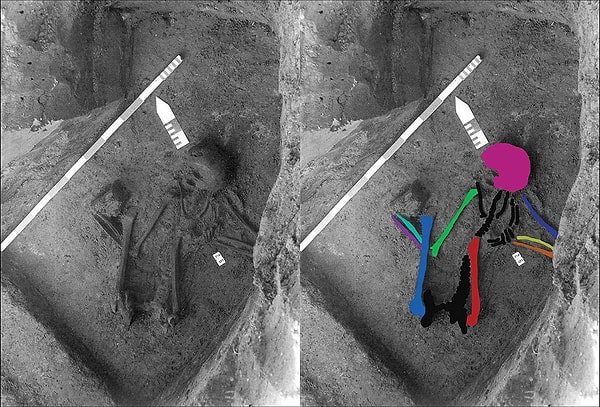Archaeologists in Belgium have uncovered a truly baffling discovery – a skeleton found in an ancient Roman tomb, but with a shocking twist. What seemed like a regular burial at first glance, turned out to be a puzzle of bones from different eras, spanning from the Stone Age all the way through the Roman period. These bones were deliberately combined, sparking questions about ancient burial rituals and beliefs. Could this be linked to a religious practice, or a carefully crafted ritual? This remarkable find sheds new light on the ancient human views of death and the afterlife. You won’t believe what they discovered!
Mystery of a 2,000-Year-Old Skeleton Found in Belgium Unveiled
1

Archaeologists have made an extraordinary discovery in Belgium.

They are trying to unravel the mystery of an intriguing skeleton found in a Roman tomb in the 1970s. After radiocarbon testing, it was revealed that the bones date not only to the Roman period but also to the Stone Age.
The fact that the skeleton was found in a fetal position typical of the Roman era is noteworthy, and it is believed that the bones might have been assembled in one of two ways.

One theory suggests that a Stone Age tomb was accidentally opened, and the Romans 'completed' the tomb by adding a skull.
The other theory is that during the Gallo-Roman period, Neolithic bones and a Roman skull were deliberately combined.
Regardless of which theory is correct, the careful selection and arrangement of the bones indicate that this tomb was arranged with great care.
In fact, beliefs surrounding death and the spirit in ancient times were much more complex than we often think.
What are your thoughts on this?

